“An Introduction to Drilling & Sampling in Geotechnical Practice.”
An instructional video by J. T. DeJong & R. W. Boulanger
A 35-minute instructional video on drilling and sampling methods in Geotechnical Engineering practice is available as MPEG or Quicktime movie files or on VHS tape. A description of the video and how to obtain or download copies is available at:
http://cee.engr.ucdavis.edu/faculty/boulanger/video.html
[The following images were pulled from the Quicktime movie files. Unfortunately, higher resolution versions are not available at this time.]
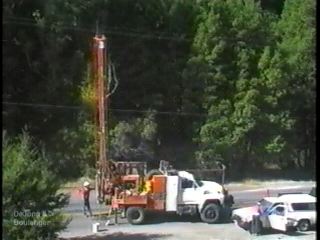
The introduction to the video discusses the role of drilling and sampling in geotechnical practice.
The first main section provides an overview of different drilling rigs (i.e., highway, off-road, over-water, and portable).
This image shows a typical highway rig.
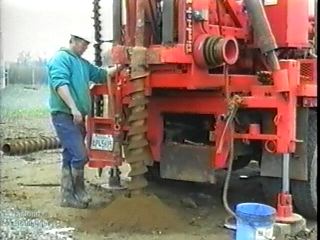
The second main section provides an overview of different drilling methods, including solid and hollow-stem auguring, rotary wash boring, and rock coring.
This image shows a hollow-stem augur in action.
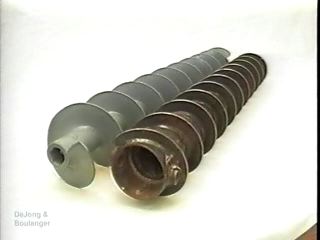
The video provides numerous close-ups of the different drilling equipment components so the viewer can better understand how the equipment works.
This image compares solid-stem (left) and hollow-stem (right) augur flights.
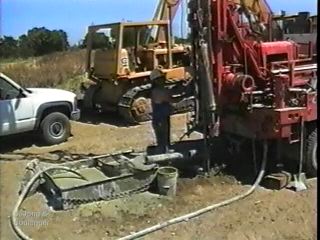
This image shows a rotary wash boring set-up. The drilling “mud,” a mixture of water and bentonite, is circulated through the tank in the left-foreground of the photo. The mud is pumped down the drill stem to the hole bottom, where it picks up soil cuttings and carries them to the surface and into the tank. The mud also serves to support the borehole walls.
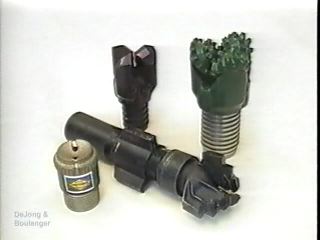
Several different drill bits and their relative advantages are described.
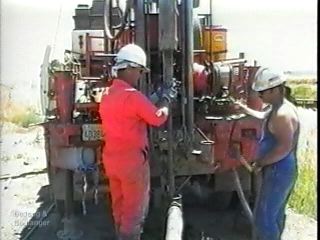
The third main section of the video describes different sampling methods, including SPT sampling, thin-walled tube sampling (Shelby, fixed-piston, Pitcher barrel), and rock coring.
This image shows a Standard Penetration Test (SPT) in progress. The driller on the right is pulling the rope tight on the rotating cathead drum, which then lifts the SPT hammer (top-center of image).
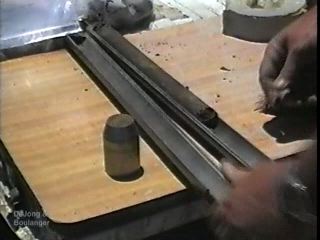
The split-spoon sampler, used in the above SPT test, has been split apart to expose the recovered soil sample. Other types of split-spoon samplers may use brass liners to contain the soil samples.
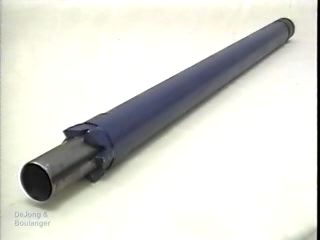
This Pitcher barrel sampler combines a thin-walled tube (protruding out the bottom) with the ability for overcoring (see cutter teeth near the tube bottom). The tube is on a spring-loaded mechanism that will compress if hard soils are encountered. The tube stays extended in soft soils, but is pushed back into the cutter barrel in hard soils. In hard soils, the cutter advances the hole and the tube is protected against buckling.
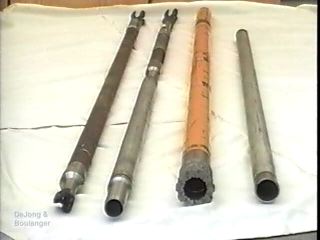
Different wireline rock coring techniques are also described.
The last main section of the video describes the effects of sampling disturbance on laboratory test results.
The closing section of the video discusses the factors that affect the selection and planning of a subsurface exploration program.
